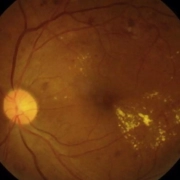Female reproductive factors closely associated with COPD risk: BMJ study

A recent study published in the BMJ Thorax unveiled the intricate relationship between female reproductive factors and the development of Chronic Obstructive Pulmonary Disease (COPD). This research looks into how aspects like the age at menarche, childbirth, miscarriage, stillbirth and menopause could influence the susceptibility of woman to COPD.
This study analyzed data across three cohorts from over 280,000 women that makes it one of the most extensive investigations into this subject. Over a median follow-up period of 11 years, 3.8% of the participants were diagnosed with COPD. The findings revealed a U-shaped relationship was observed between age at menarche and COPD risk which indicates that both early and late onset of menstruation could increase susceptibility. Also, women with three or more children were found to have an increased risk of COPD when compared to those with fewer offspring, with a similar pattern observed in the individuals who experienced multiple miscarriages or stillbirths.
Among postmenopausal women, an earlier onset of natural menopause was associated to an elevated risk of COPD. The individuals who experienced menopause before the age of 40 were almost twice as likely to develop COPD when compared to those who reached menopause between the ages of 50 and 51. These findings underline the complex relationship between reproductive health and respiratory outcomes in women. While previous studies have primarily focused on the impact of smoking and environmental factors on COPD risk, this study in particular, highlights the significance of considering female-specific variables.
This study emphasized the importance of the outcomes in informing healthcare strategies and personalized interventions for COPD prevention in women. The findings highlight the need for a comprehensive approach to COPD prevention which takes into account the traditional risk factors and reproductive history in addition.
Reference:
Liang, C., Chung, H.-F., Dobson, A. J., Sandin, S., Weiderpass, E., & Mishra, G. D. (2024). Female reproductive histories and the risk of chronic obstructive pulmonary disease. Thorax. https://doi.org/10.1136/thorax-2023-220388
Powered by WPeMatico



















